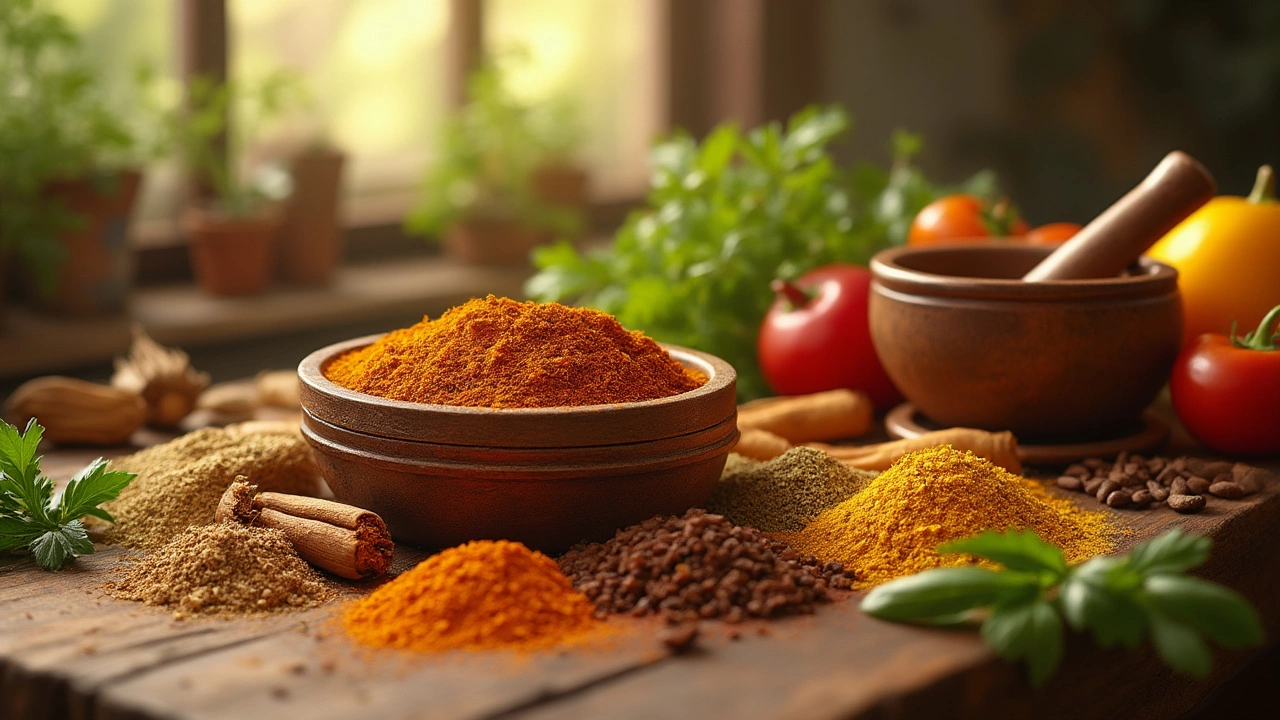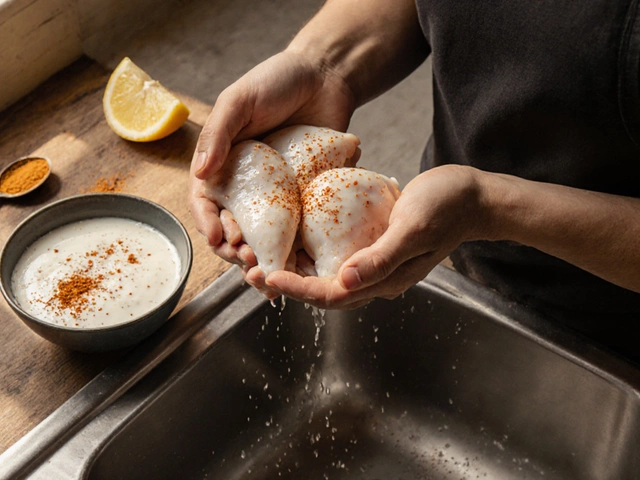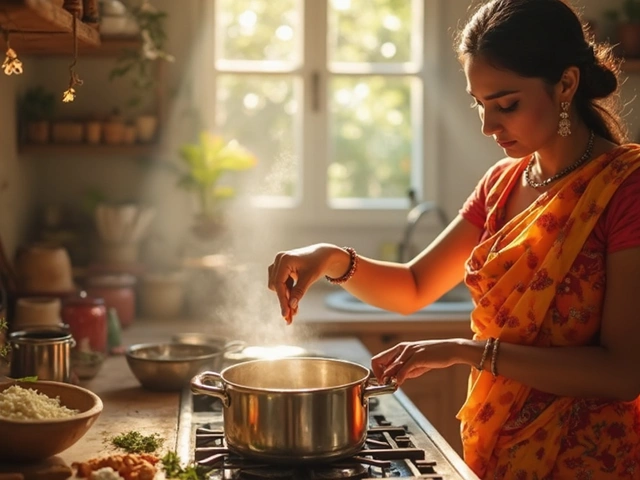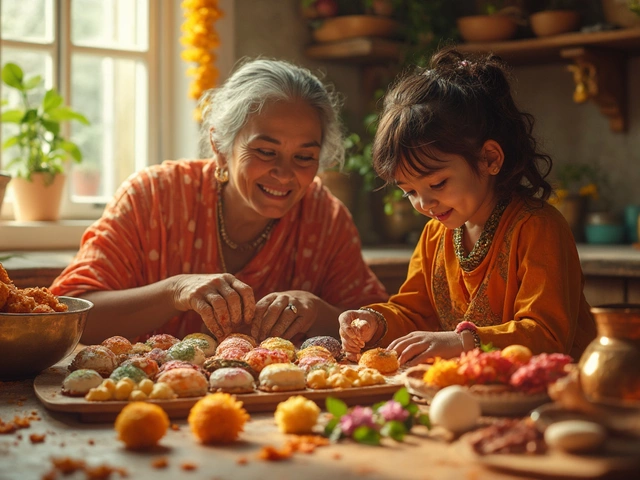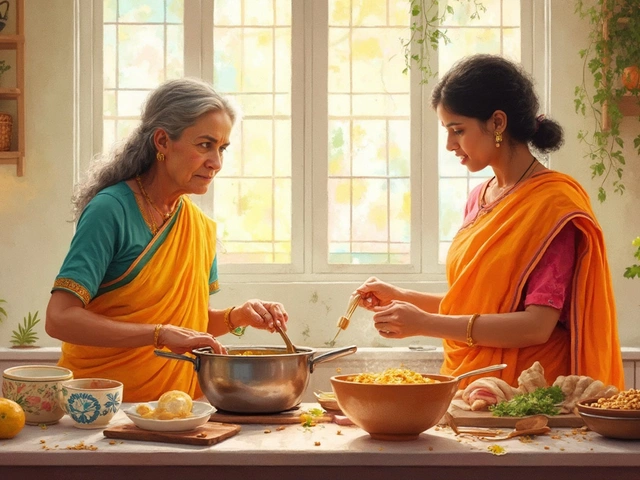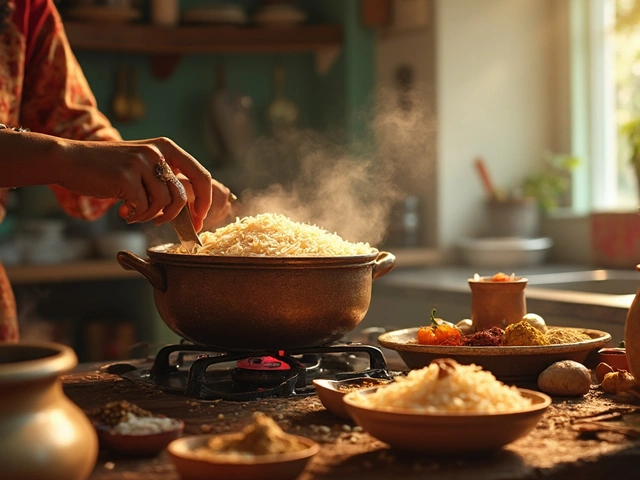You know that magical whiff when a pot of curry bubbles away on the stove and suddenly the whole house smells like your happiest memory from a trip to India? That’s usually garam masala working its secret, layered wizardry. But open a jar of garam masala and you’ll notice something right away: no two mixes smell—or taste—exactly alike. There’s no universal recipe. Families and regions have their own formulas, fiercely guarded and lovingly passed down. And, as anyone who’s argued over the “right” way to make biryani knows, those little tweaks mean everything. So what exactly goes into this iconic Indian spice blend? Let’s dig far beyond what’s printed on the label.
The Core of Garam Masala: Classic Ingredients and Regional Quirks
Every single garam masala begins with whole spices—never the stuff in a dusty old shaker. Think of it as the fragrance engine: you’re building something intense, warm, and a little mysterious. The backbone always includes coriander seeds, cumin seeds, cardamom pods (usually green, sometimes black), cinnamon sticks, black peppercorns, and cloves. These six main characters show up in nearly every traditional recipe, though in slightly different ratios. You might catch nutmeg or mace making a cameo, especially in North Indian mixes that love their deep, almost Christmassy notes. Down south, some cooks sneak in star anise or fennel seeds to give things a brighter lift.
If you peer into the shelves of a Punjabi grandmother, the chances are high her mix leans coriander-heavy: the seeds get toasted just till they’re nutty and vivid. Delhi blends, on the other hand, crank up the black pepper and cardamom, chasing a more cooling finish. Step over to Bengal, and you may find garam masala pared back to just three: cardamom, cinnamon, and clove—simple but soulful. And in Goa, don’t be shocked if bright red Kashmiri chilies turn up in the jar, lending a ruddy hue and mild heat that’s missing from store-bought versions. So when someone says, “This doesn’t taste like my mother’s garam masala,” they’re probably right.
Let’s break down the signature stars you’ll come across:
- Coriander: Earthy and citrusy, it mellow outs the heat.
- Cumin: Warm, nutty, sometimes a little smoky.
- Cardamom: Sweet, floral, and almost piney; green is fresher, black is woodier.
- Cinnamon: Adds warmth and a hint of inherent sweetness.
- Black pepper: This is where the “garam” (hot) factor sneaks in.
- Cloves: Tiny but mighty—strong, spicy, and almost medicinal.
- Nutmeg and mace: Lends an elusive top note, especially in richer dishes.
- Fennel or star anise: Used more rarely, they bring brightness and licorice-like tones.
What’s not typical? Pre-ground spices, salt, or things like turmeric and chili powder. Garam masala is about warmth, not a punch of heat or color. Some South African-Indian families who’ve been here for generations even add bay leaves or stone flower (dagad phool)—that’s how recipes evolve and adapt.
It’s wild to realize that garam masala’s name—"hot spice mix"—has little to do with burning your mouth. Instead, “garam” refers to the warming qualities in Ayurvedic medicine. Spices like cinnamon and cardamom are believed to raise body temperature, speed metabolism, and boost energy. A 2020 article in the journal Frontiers in Pharmacology pinned garam masala’s health benefits on these warming spices, linking them to better digestion and even anti-inflammatory effects. So, that extra pinch on your lentils? It’s not just for flavor, but for your gut, too.
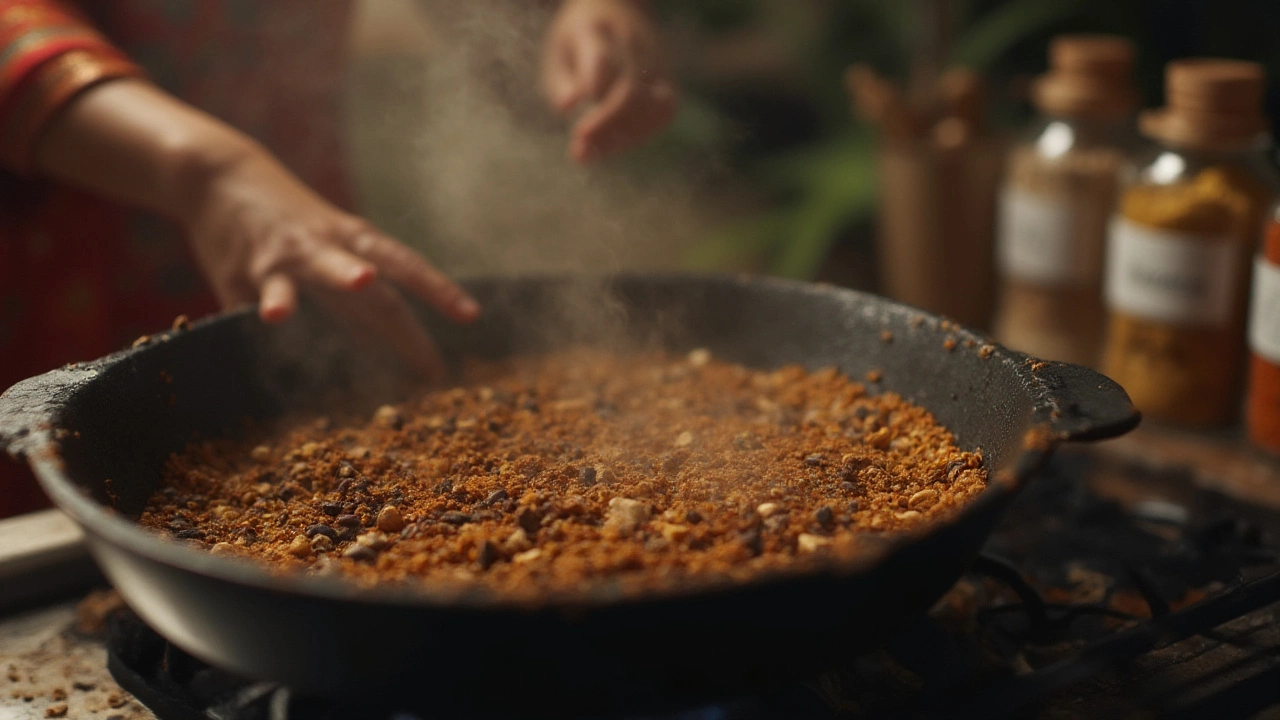
Secrets of Perfect Garam Masala: Roasting, Grinding, and Freshness
If you’ve ever watched someone in a bustling Indian kitchen toss whole spices onto a dry pan and swirl them with impossible confidence, you know the sound and smell is as important as the taste. This step—dry roasting—is where basic spices turn into something greater than the sum of their parts. Roasting unlocks aromatic oils, banishing any bitterness and pulling out deep, sweet tones. The trick? Go slow. High heat will scorch delicate cardamom and burn cloves, so aim for low or medium, and stir constantly. When you see the cumin popping and the nutmeg giving off its perfume, you know you’re on the right road. Turn off the heat as soon as the seeds start to darken and the kitchen smells like you walked into a spice market in Mumbai.
The next non-negotiable is grinding the mix yourself, right after the roast. Sure, whizzing in a coffee grinder is easy and efficient, but if you have even the tiniest mortar and pestle, try pounding a batch by hand. It won’t be as fine, but the ritual is its own reward. Store-bought garam masalas often taste flat because ground spices lose their punch; volatile oils evaporate, and the blend just sits on a shelf, waiting for someone to notice.
This is why home cooks in India usually make tiny batches every few weeks—so the spice mix stays potent and alive. Some swear by grinding in the morning when the air is cool and dry. There’s a lovely old quote by Indian food historian Pushpesh Pant:
“No commercial blend, however sophisticated its packaging, can match the aroma and character of garam masala pounded fresh at home.”And once you smell a just-made batch, you’ll get why. Ryan always laughs at how my mood improves on garam masala days—the whole house seems lighter.
For storage, always keep it in a small, airtight glass jar, far from any direct sun and well away from heat. Humidity is garam masala’s natural enemy: it’ll clump up, and the flavor will fade faster than a bouquet on a hot Cape Town afternoon. I like to label mine with the date, because even the freshest batch should be used within six months. Go longer and you’ll begin to notice the difference—first in aroma, then gradually in flavor.
If you’re making garam masala for the first time, start classic and small. You can always tinker later. Here’s a solid starter recipe:
- 2 tablespoons coriander seeds
- 1 tablespoon cumin seeds
- 1 tablespoon black peppercorns
- 8 green cardamom pods
- 2 cinnamon sticks (about 5 cm each)
- 1 teaspoon whole cloves
- 1 small piece of whole nutmeg
Dry roast, cool, then grind. If you love the flavor, experiment with a pinch of mace, a handful of fennel, or swap black for green cardamom. Don’t be afraid to make it your own, but always trust your nose; if something smells off, start fresh.
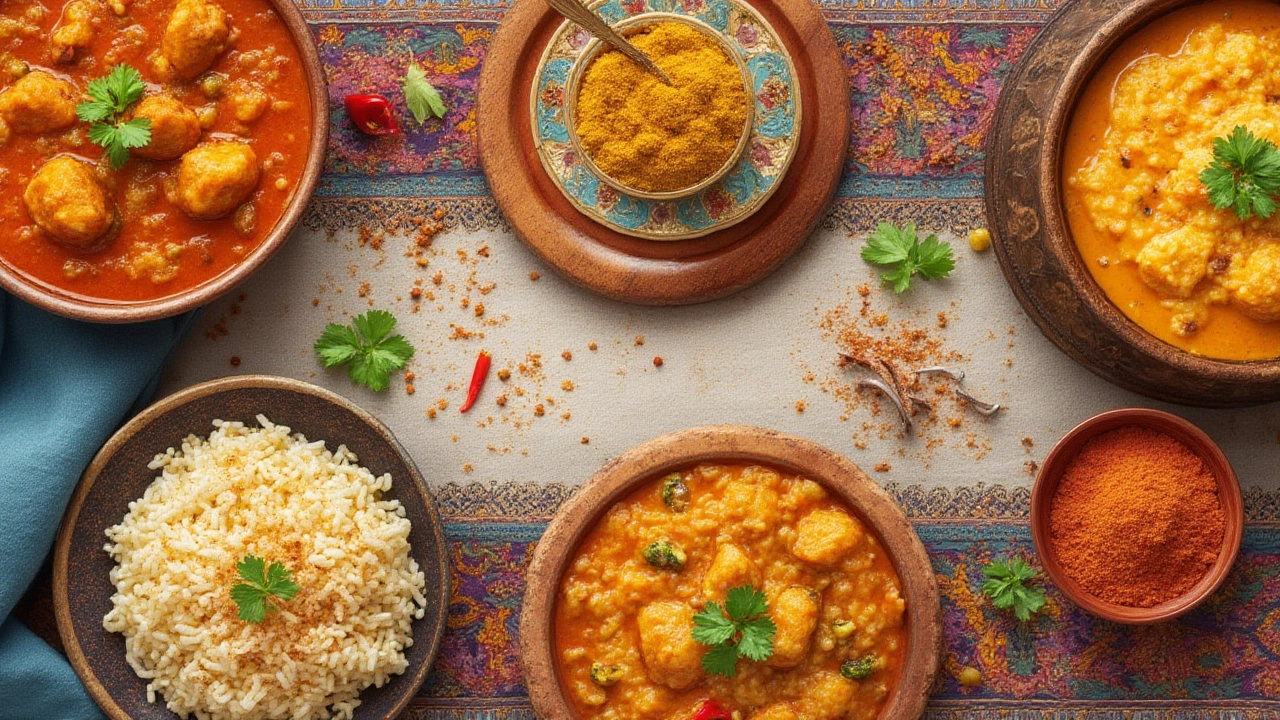
Cooking with Garam Masala: Tips, Myths, and Modern Twists
Now that you’ve got your vibrant, custom garam masala, what next? Contrary to what some recipes say, garam masala isn’t a seasoning to dump in at the start of cooking—doing that actually dulls all those delicate top notes. Instead, think of it as the perfume you add right at the end, off the heat, or even as a finishing sprinkle. This way, the volatile aromatic oils stay bright and present, turning an average dish extraordinary. When I add mine to the pot of dal just before serving, even Ryan notices the shift. Suddenly, that humble lentil stew feels festive.
Not just for curries, garam masala shows up in all sorts of places if you’re willing to experiment. A pinch on roasted veggies, sweet potatoes, even tossed into popcorn turns the familiar into something unforgettable. Some Indian desserts—like carrot halwa or kheer—get their final magic dusting from garam masala. There’s a mind-blowing trick I picked up from a friend in Durban: tiny garam masala pinches in chocolate cake batter. The combination of cocoa, cinnamon, and cardamom is rich and complex but not overpowering, and it made our winter evenings something special.
Keep in mind, garam masala is always used in moderation. More is not better; too much can crowd out the subtler flavors in your food. The blend is versatile, but it shines best when you let it play a supporting role—never the star. If you’re making a marinade, add a little into yogurt with fresh ginger and garlic. For soups or stews, stir it in with the final seasoning. When I make samosas, a touch of garam masala in the potato filling pulls all the flavors together and gives it that unmistakable warmth.
Some myths to lay to rest: garam masala isn’t spicy-hot in the chili-pepper sense, and it is not interchangeable with curry powder, which always contains turmeric and is much milder. Each region’s garam masala varies greatly, so once you’ve nailed the basic formula, have fun researching old-school versions: Kashmiri garam masala, Rajasthani, even South African blends passed down from generations of Indian families living here in Cape Town.
The heart of it is this: garam masala is about more than a recipe. It’s a story, a family memory, an argument at the spice shop, and a shortcut to comfort. It’s also endlessly customizable—no wrong turn as long as you remember the golden rule: always use fresh, whole spices, roast them gently, and trust your own hands. Get that right, and you’ll never go back to the supermarket jar again.





